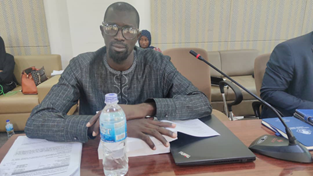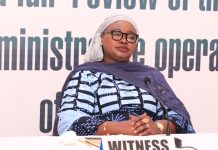By: Kebba AF Touray
The Auditor General in its audit report on the 2019 Accounts of the Government of the Gambia, disclosed that they have noted differences between the statement of public debt and figures recorded in the debt management system (Meridian). The auditor general made these and other revelations in its audit report on the said government accounts, which appeared before the Finance and Public Accounts Committee (FPAC) of the National Assembly.
“We noted an understatement of D656,048,449.97 during their conciliation between the statement of public debt disclosed in the financial statement and debt balances recorded in the debt management system (Meridian),” the audit report disclosed.
The report further asserts that the implication of this means there is a risk that the statement of public debt disclosed in the financial statements was mis-stated.
The report recommended that the Accountant General should liaise with the Ministry of Finance to investigate the cause of the differences and details provided to the audit team for verification, and that the Accountant General should ensure that debt balances are adjusted in the financial statement.
According to the management in its response, the cause of the difference is due to the ongoing updates on the disbursement and principal in the Meridian database.
“There was a time lag between the time the data was provided and compiled as the Statement of Public Debt, and the provision of the figures recorded in the Debt management system to the Auditors during the audit exercise,” management said.
The management however stated that the updated figures as at end December 2019, would be disclosed in the Revised Financial Statement
The Audit report on differences in outstanding debt balance reported in the debt management system and financial statements, continued that they re-performed calculations on the outstanding debt’s closing balances generated from the system and noted differences amounting to D59, 370, 875, 815.73 between the amount reported in the financial statement and the re-calculated amount.
The audit translated this as weaknesses in the internal control surrounding the administration of public debt and if not addressed, will be misleading to users of the financial statements.
“The Accountant General should investigate and adjust the financial statements accordingly and details furnished to this office for verification,” the audit report recommended.
Management also responded that the method applied by the auditors to re-calculate the debt closing balances was incorrect and as such, it will be difficult for the two debt balances to tally.
On failure to reveal suspected fraud, the audit report disclosed that their review of the fraud file showed a fraud case involving an officer at the Intellectual Property Rights office who issued fake receipts for moneys paid by trademark applicants, but did not pay the amount collected to the main cashier.
“We noted through a police report referenced GPF/114/OPS (246) and dated 26th March 2019 confirming fraudulent receipts amounting to D10, 401,000.00 that could not be traced in the IFMIS,” the audit report revealed on the failure to disclose suspected fraud. The report indicate that the above amount was not also disclosed in the statement of losses of public moneys in the financial statement, saying “the implication is that there is a risk that the amounts disclosed under losses of public money were misstated.
The Accountant General should disclose all losses of public moneys in the financial statement and to provide update on the status of investigation into the suspected fraudulent activity.
“We will review and disclose this in the Revised Financial Statement,” Management responded.
On the failure to recover loans from State Owned Enterprises (SoE), the audit report indicate that it noted government’s on-lend loans totaling D7, 367,390,837.80 to State Owned Enterprises (SoEs), but said there was no evidence provided to show any semblance of engagement from the respective SoEs in repaying these loans.
The audit report therefore recommended for MoFEA to ensure there are adequate policies and procedures regarding the repayment of loans to SOEs.
In its response, Management stated that all the NAWEC on-lending loans were not due for repayment as at the end of the year, and that GPA has been repaying the Banjul Ports Expansion Project loan.
“GCAA loan repayment was due in 2019 and they were engaged during the same year. The GAMTEL broadband network project loan was government guaranteed loan which is currently being repaid by the state owned telephone and GSM provider,’’ Management indicated.
On the under-statement of the borrowing balance the audit report said it noted that a borrowing balance amounting to D8, 568, 306, 000.00 was understated in the financial position statement of the government.
According to the audit report, there is a risk that the borrowing (T-Bills) balance disclosed is misstated, and recommended that for the Accountant General to provide explanation supported with documentary evidence in respect of the actual composition of the borrowing balance (T-Bills) disclosed, the extended trial balance and statement of financial position.
In its reply, Management indicated that the two amounts are not meant to be the same. That the Statement of Public Debt is calculated as follows: book value (amount owed to T-Bills subscribers + interest payable = Statement of Public Debt).





















